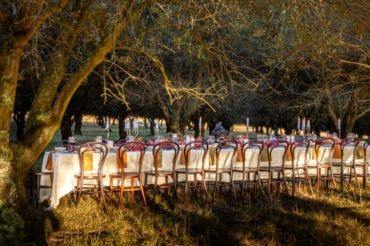
Nola Paul has given a name to nearly all her garden gnomes. It’s a ritual typically associated with producing a newborn, only multiplied by 400. “Nobody knows where I got my love of gnomes from,” she says. “I grew up in Guildford and Granville and we had a garden, but Mum was too busy looking after her 10 children to spend time in it,” she explains.
Nola’s collection sprang from an excursion to a small antique shop in Hazelbrook more than 25 years ago, when she fell for a ceramic monk gazing up to heaven. Its girth, baldness and jovial countenance suggested only one title, Friar Tuck. “I haven’t stopped collecting since,” she says. “I can’t help myself. They’ve all got different characters and different expressions.”
Conceived in late-19th-century Germany by sculptor and potter Philipp Griebel, garden gnomes were inspired by folklore that established them as creatures capable of good and evil. Shaped into a variety of poses and attitudes, many tote spades or fishing rods, thereby resembling protectors, providers or garden maintenance men. Terracotta gnomes proliferated throughout Europe until production ceased during World War II but resumed soon after, surging to present day notoriety. Today the Griebel factory still produces designer versions, but faces competition from countries that utilise cheaper materials such as plastic, concrete or resin. Outside their horticultural confines, gnomes have braved the worlds of protest, the arts, liberation and marketing. Aside from the furore associated with being banned from England’s Chelsea Flower Show for detracting from the beauty of gardens, the 2001 movie Amélie shot gnomes to stardom by virtue of a gnome-napping storyline.
The central character Amélie (played by French actress Audrey Tautou) steals her father’s prized garden gnome and sends it on a documented voyage with a flight attendant, to nudge her father into pursuing travel. Gnomes also appear in J.K. Rowling’s Harry Potter series, but are portrayed in a much more sinister light. More than a decade ago, action group Front de Libération des Nains de Jardins became famed for “rescuing” and “emancipating” gnomes, and US company Travelocity utilises a “roaming gnome” as the figurehead for their worldwide advertising campaign, launching gnome status as a universal symbol of freedom. Small wonder Nola’s garden is chockers and even her indoor spaces are brimming.
A former nurse, Nola and her husband, Richard, devoted many years to caring for their six children, three of whom suffered from cystic fibrosis and passed away in early childhood. “My gnomes put a smile on your face when you’re feeling down,” Nola says. “None of them has ever gone missing and I’ve got a lot of unusual ones. I have no idea what my collection is worth but they’re all precious.”
The complete story was originally published in Australian Country issue 16.4. Click here to subscribe to our magazine.
Click here for more farm life stories.
Words Meryl Hancock
Photography Ken Brass



















